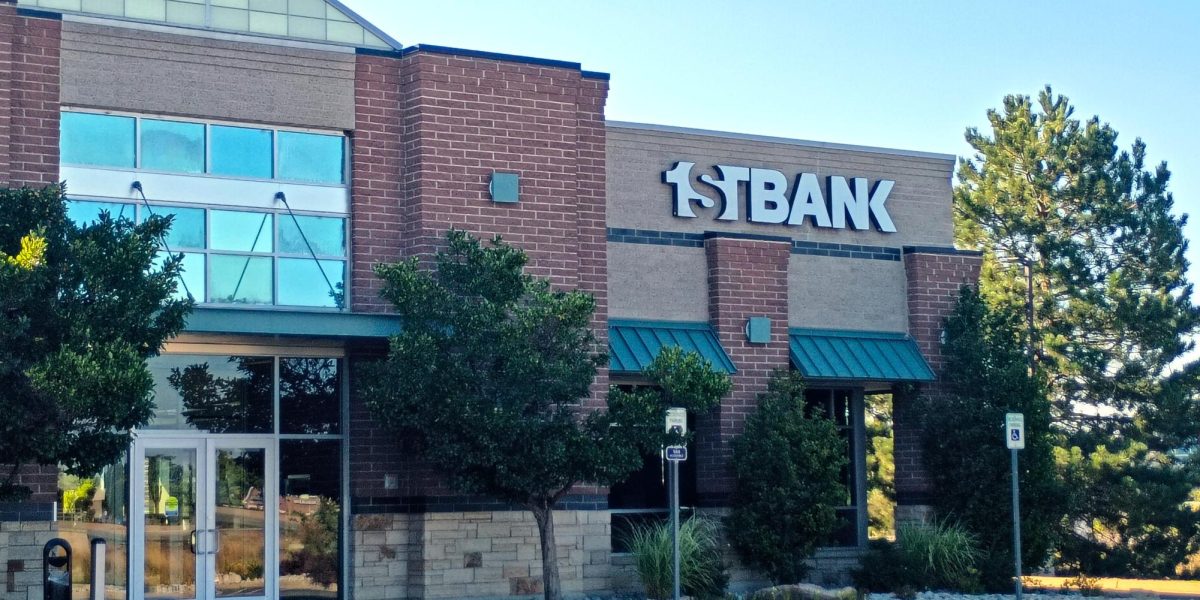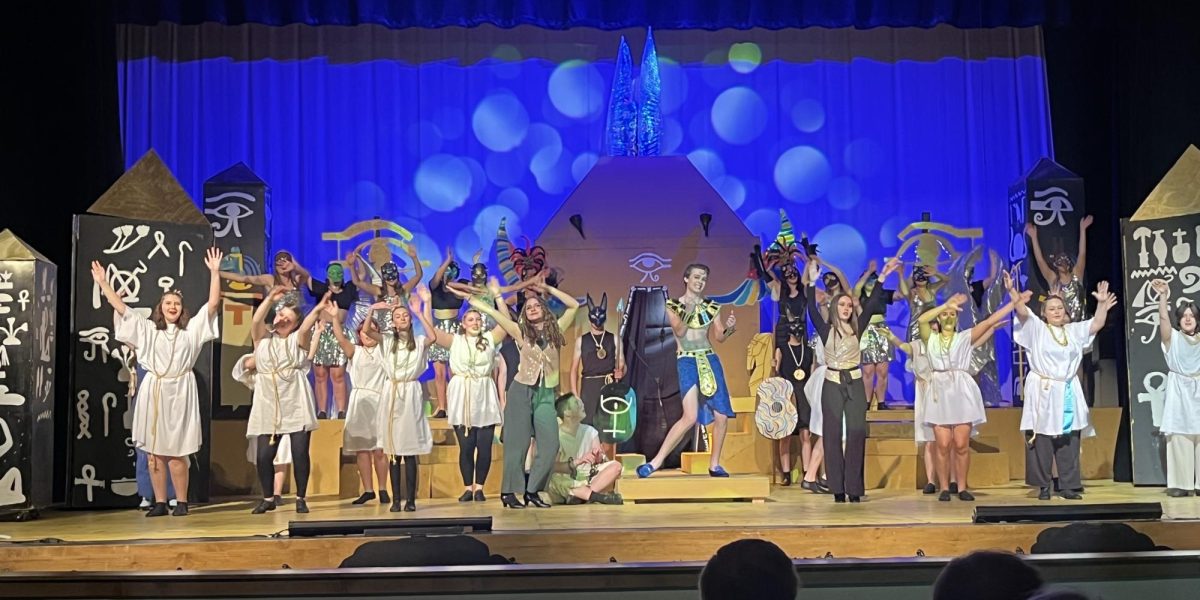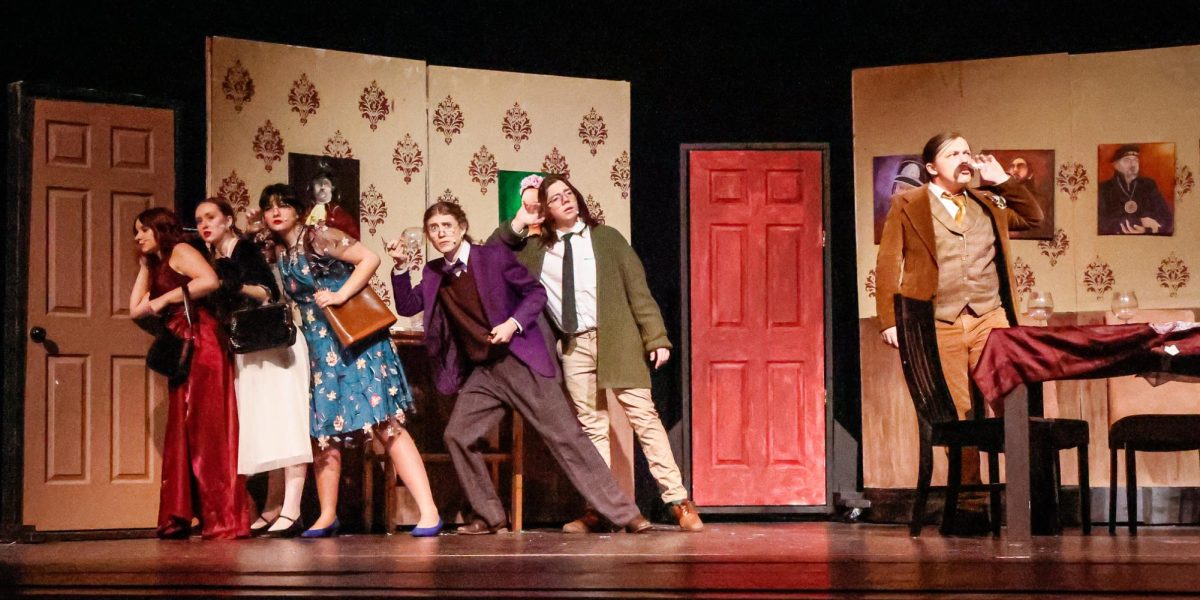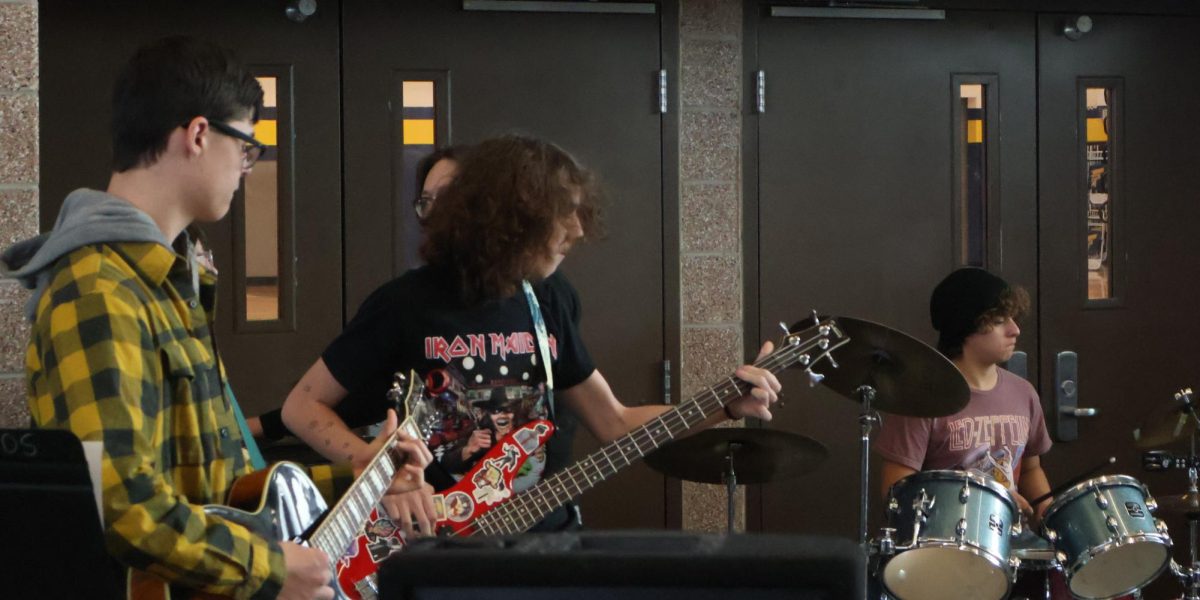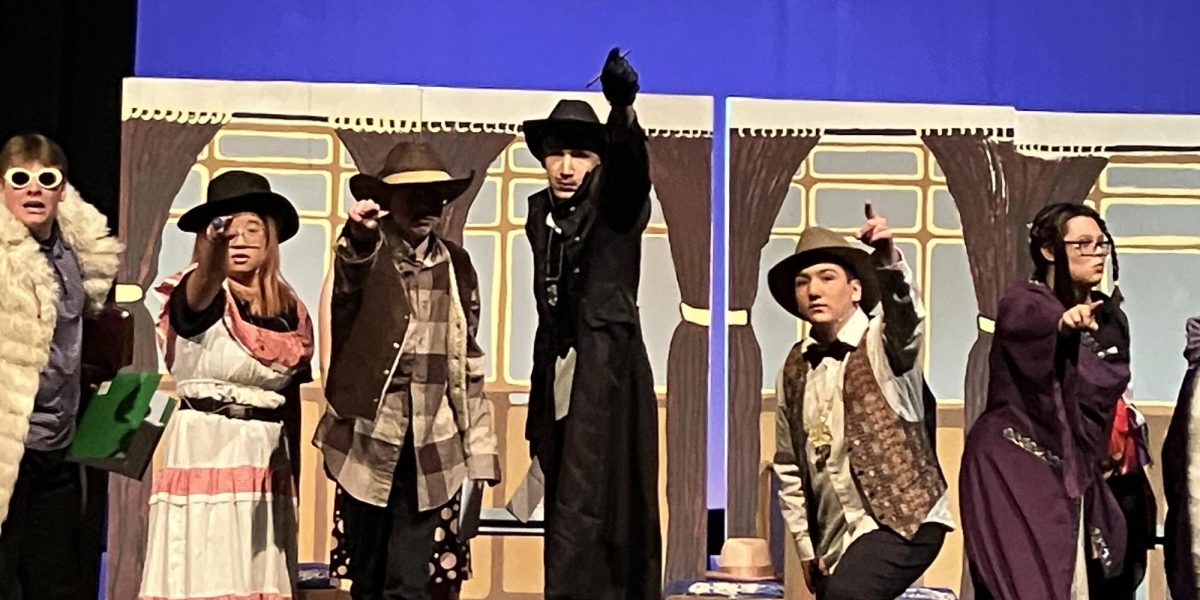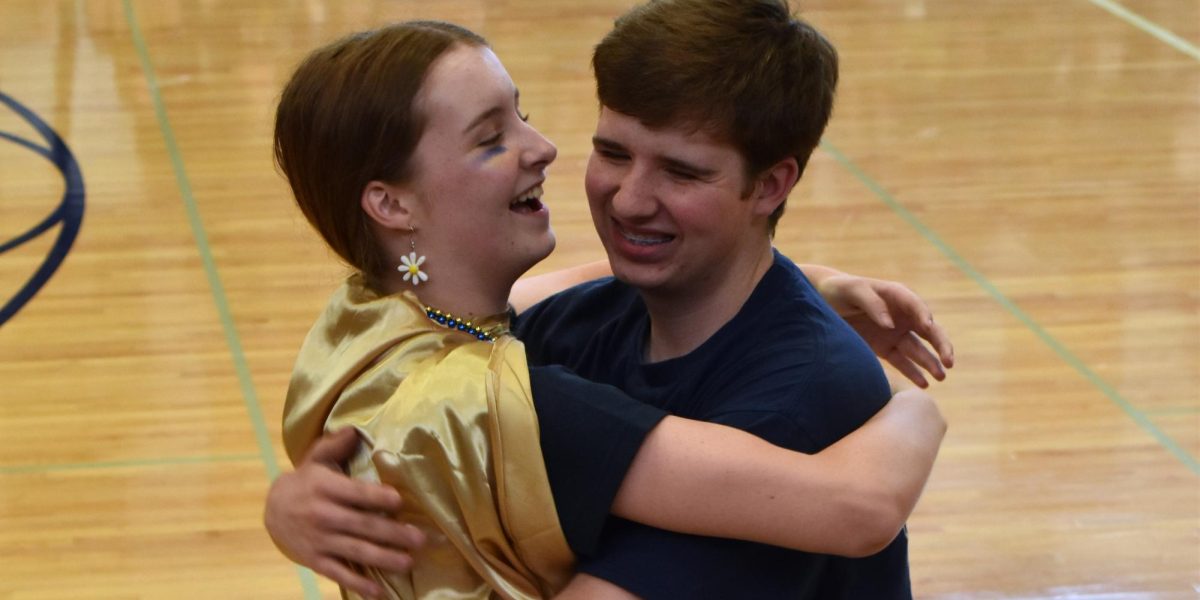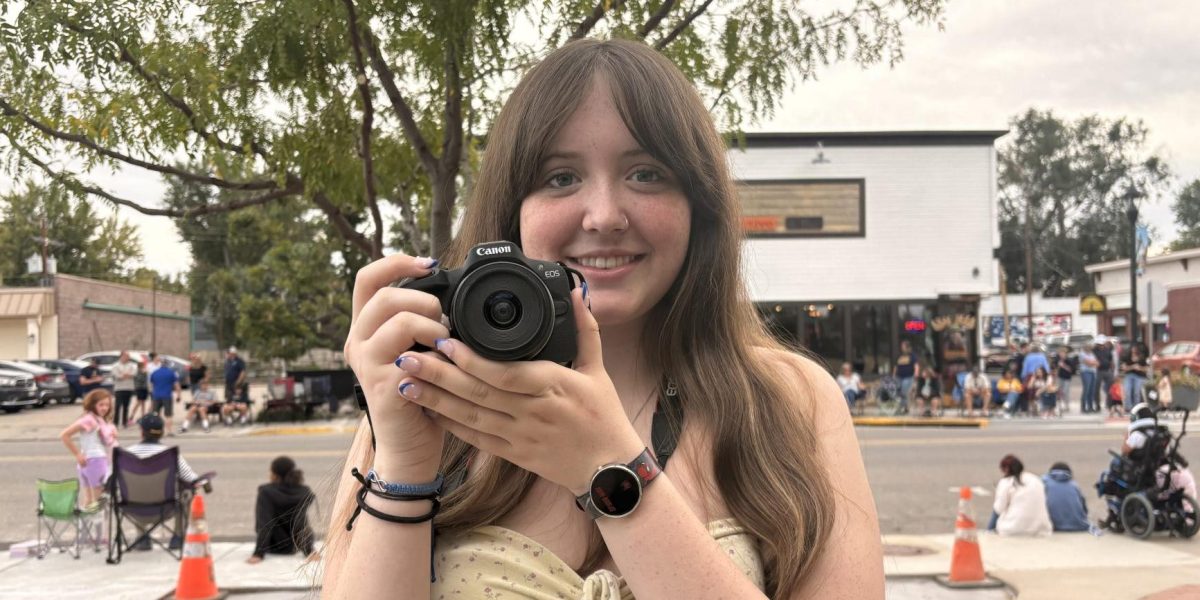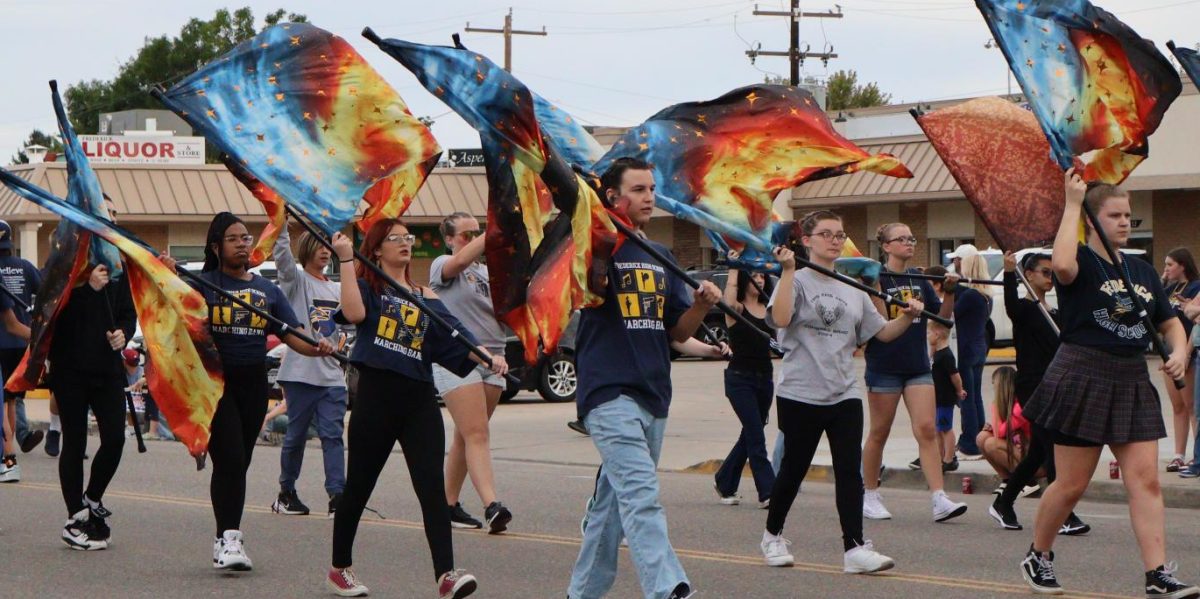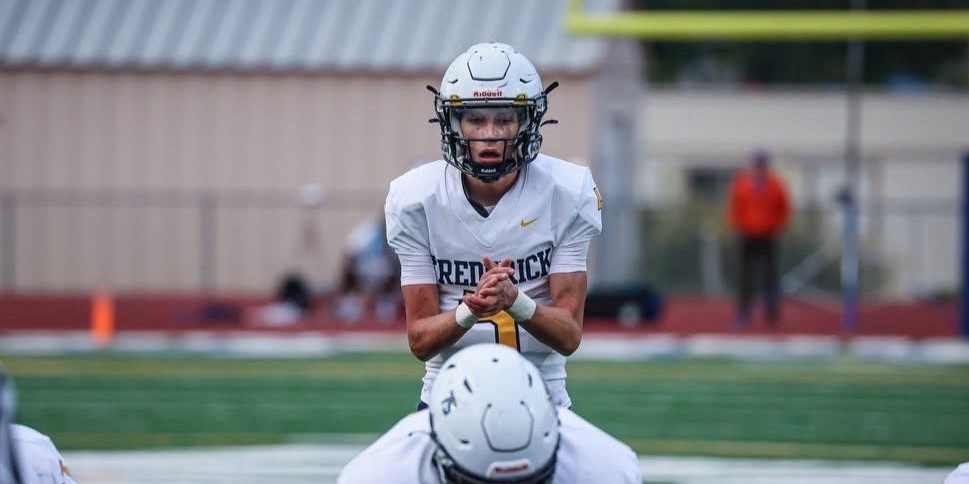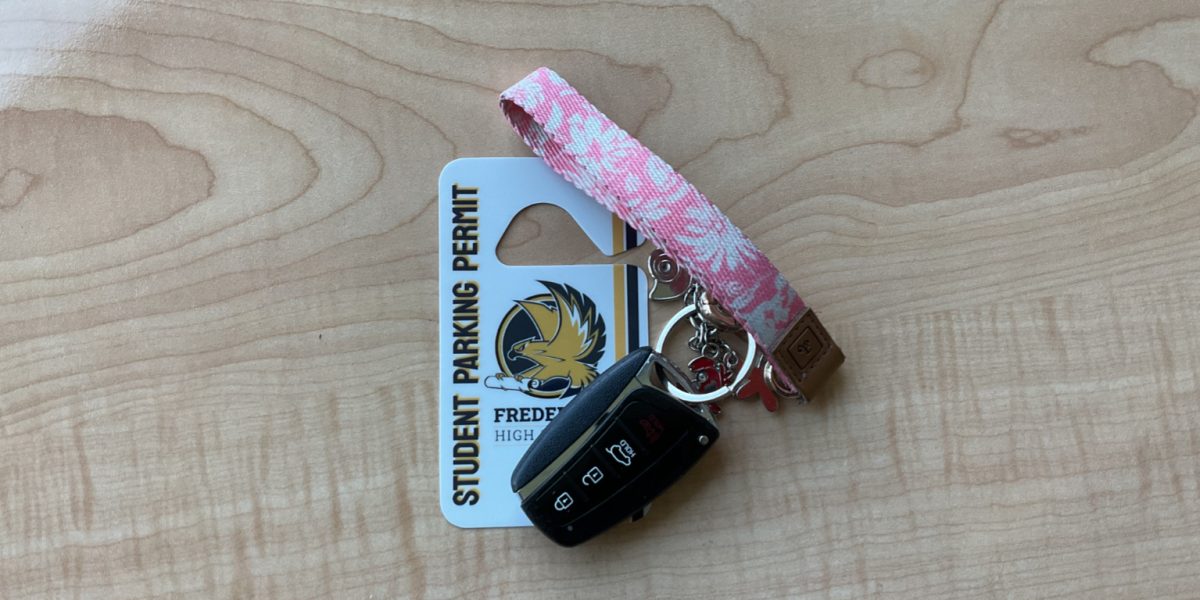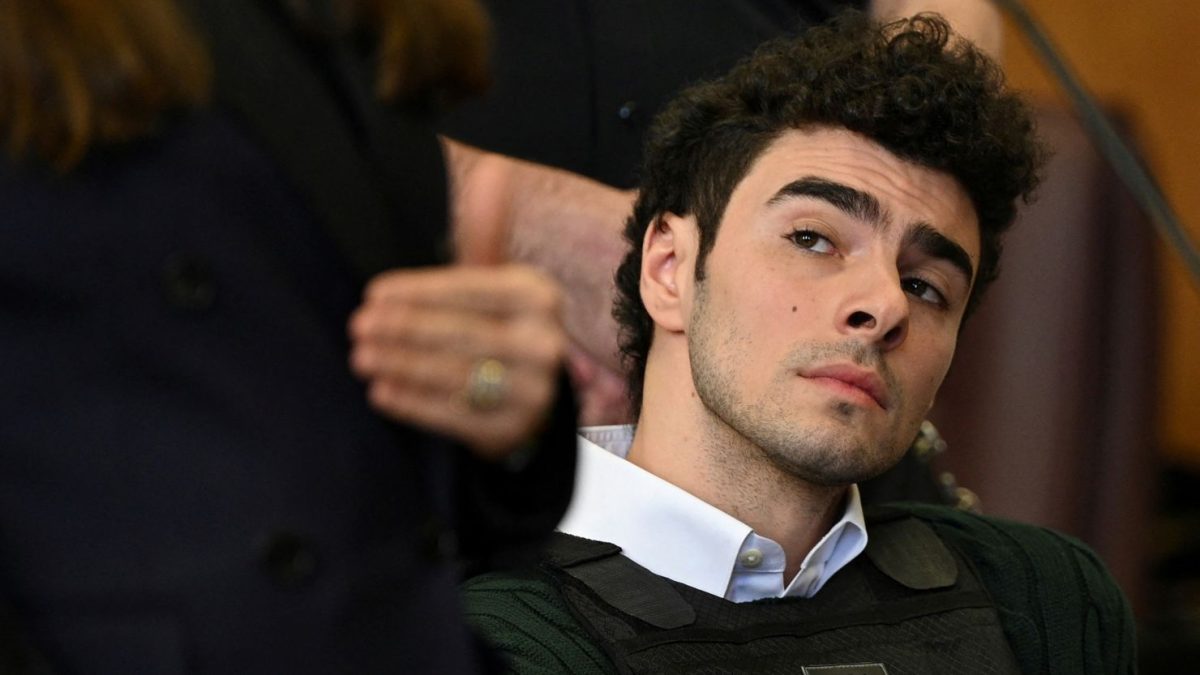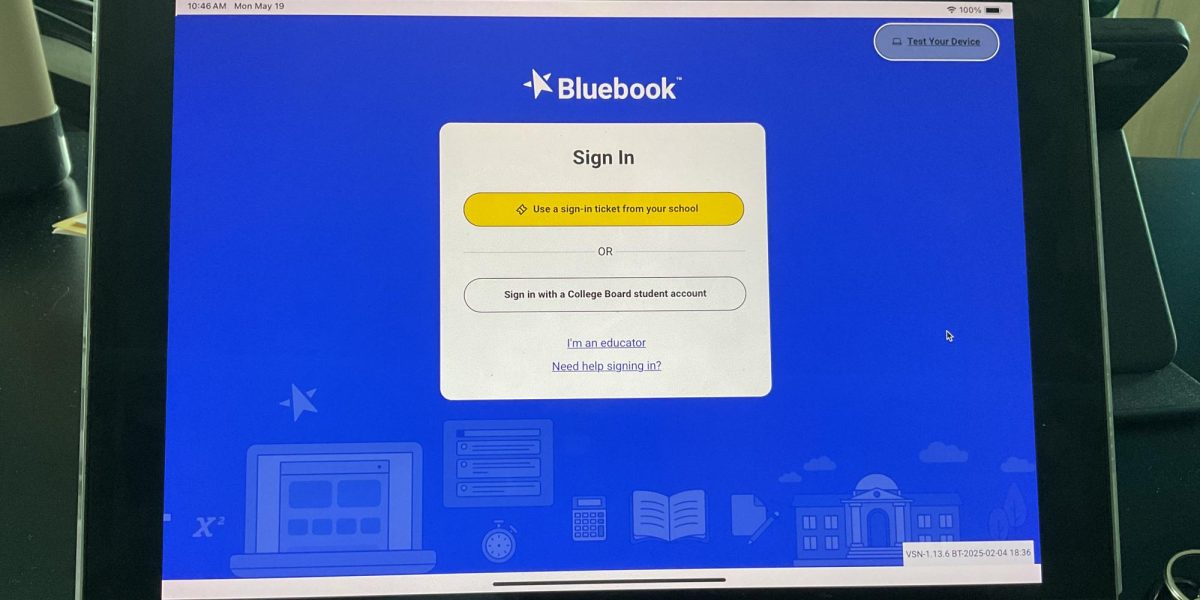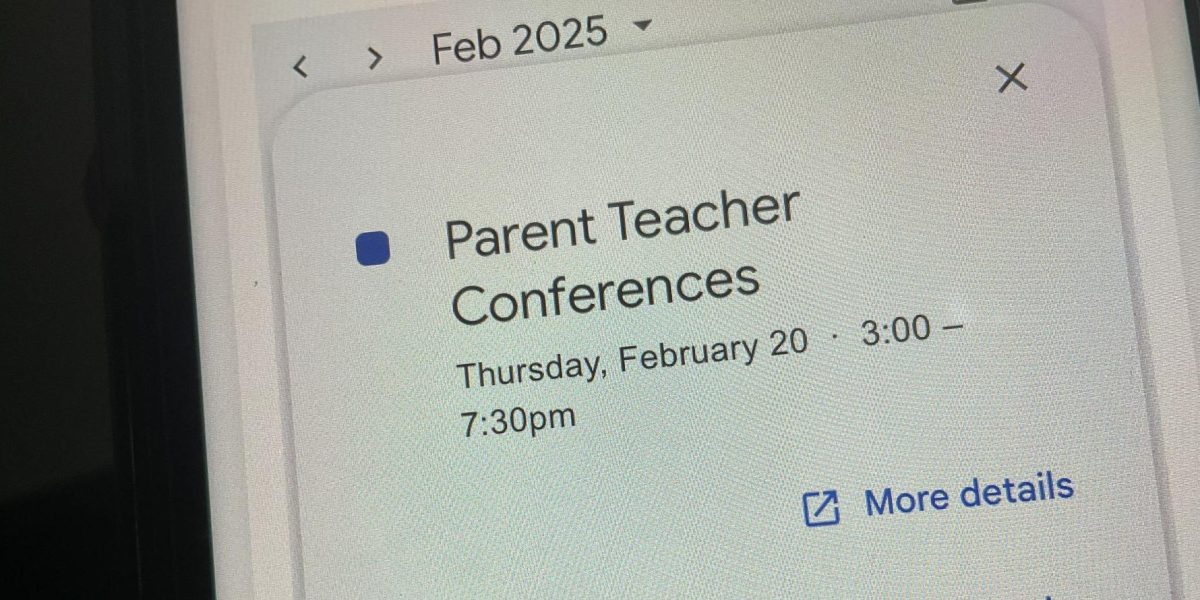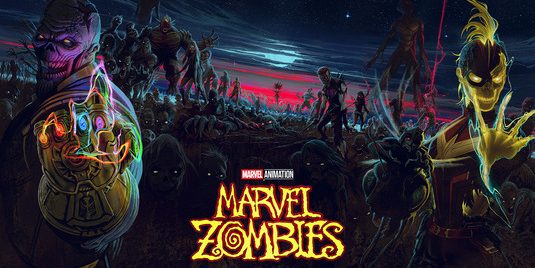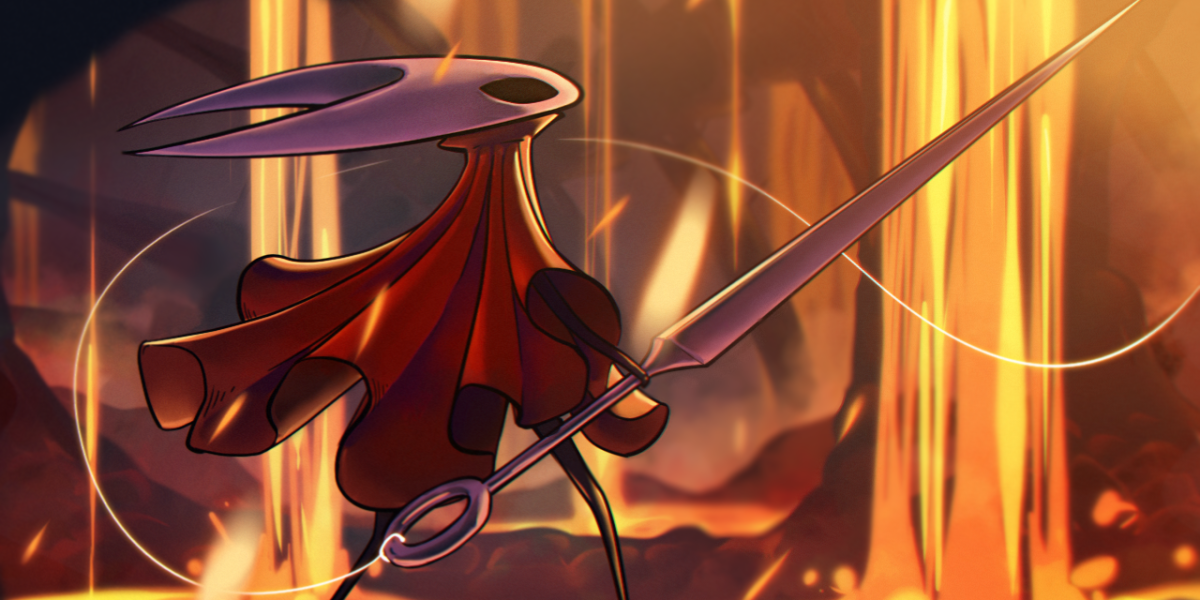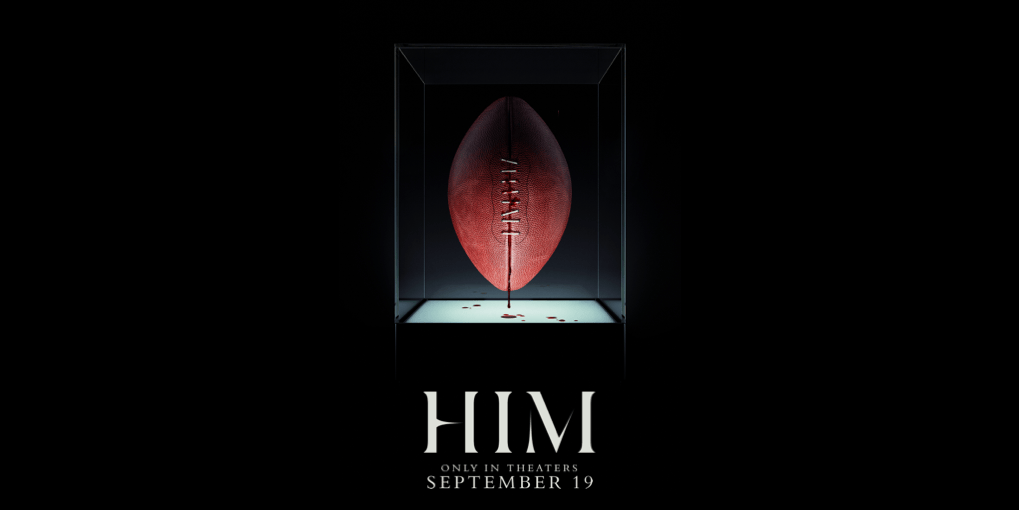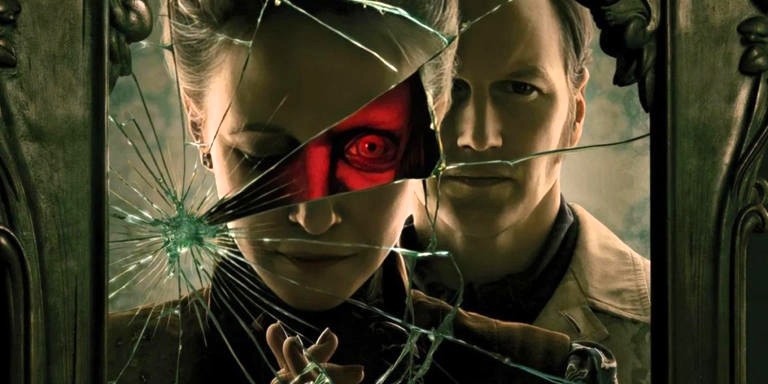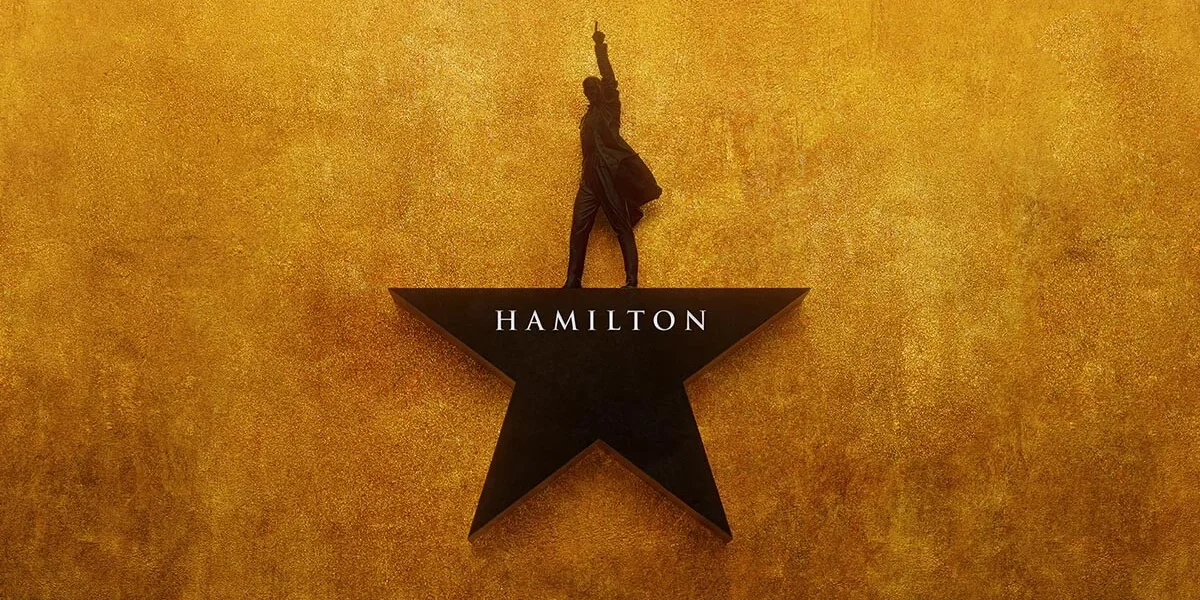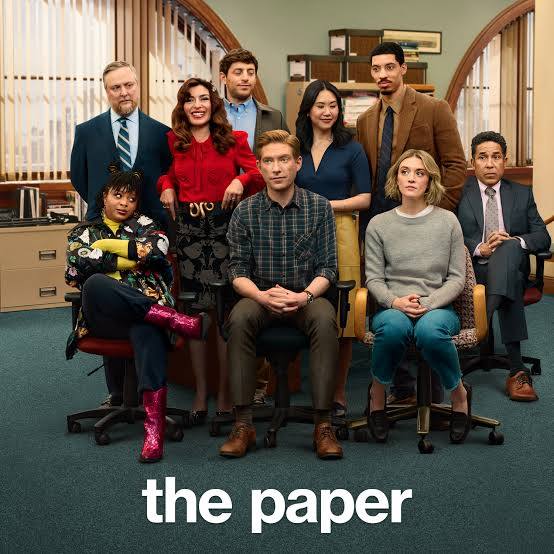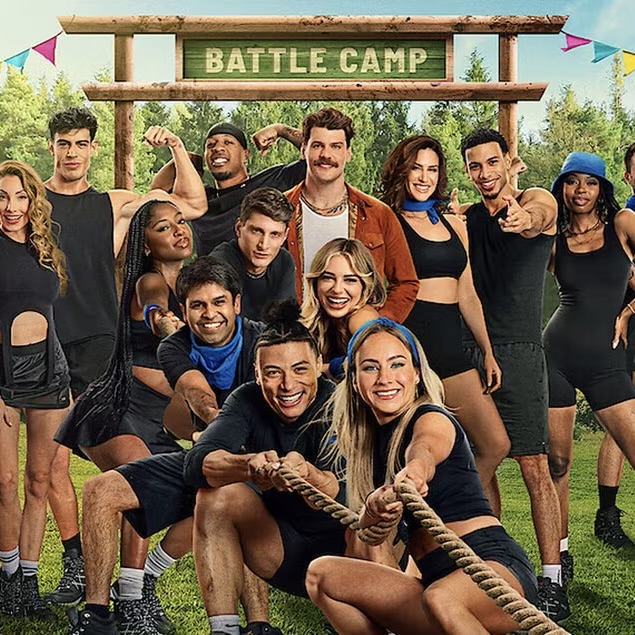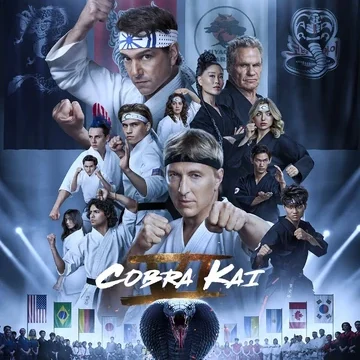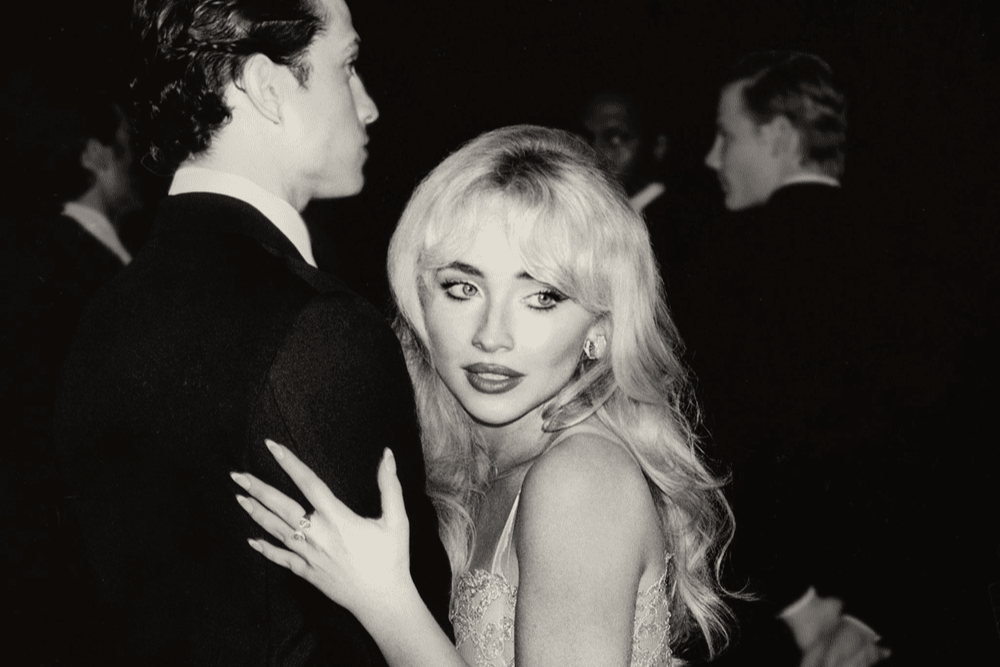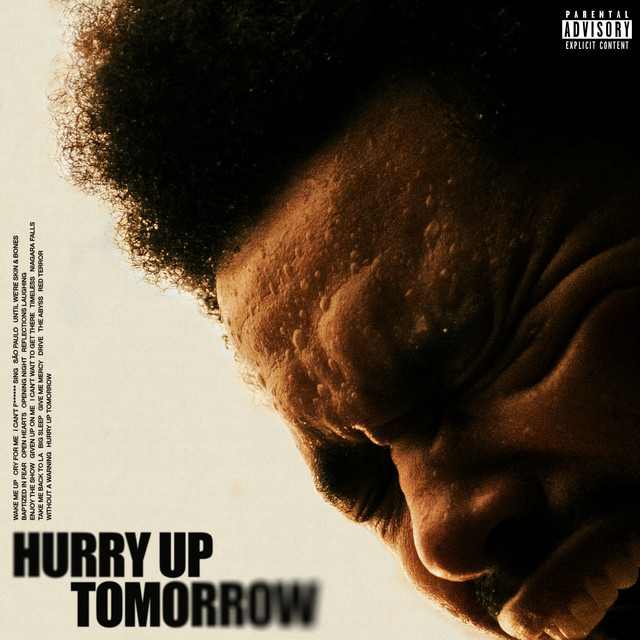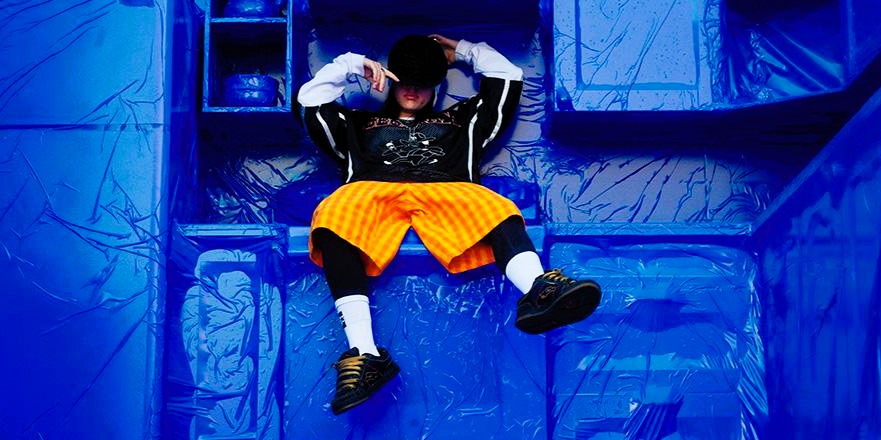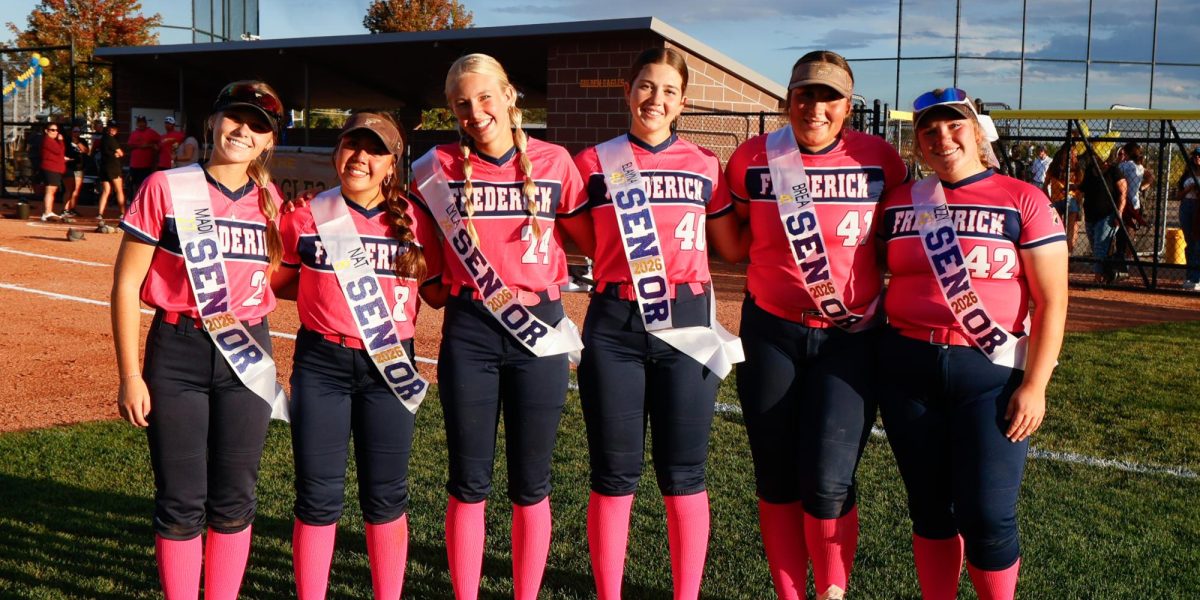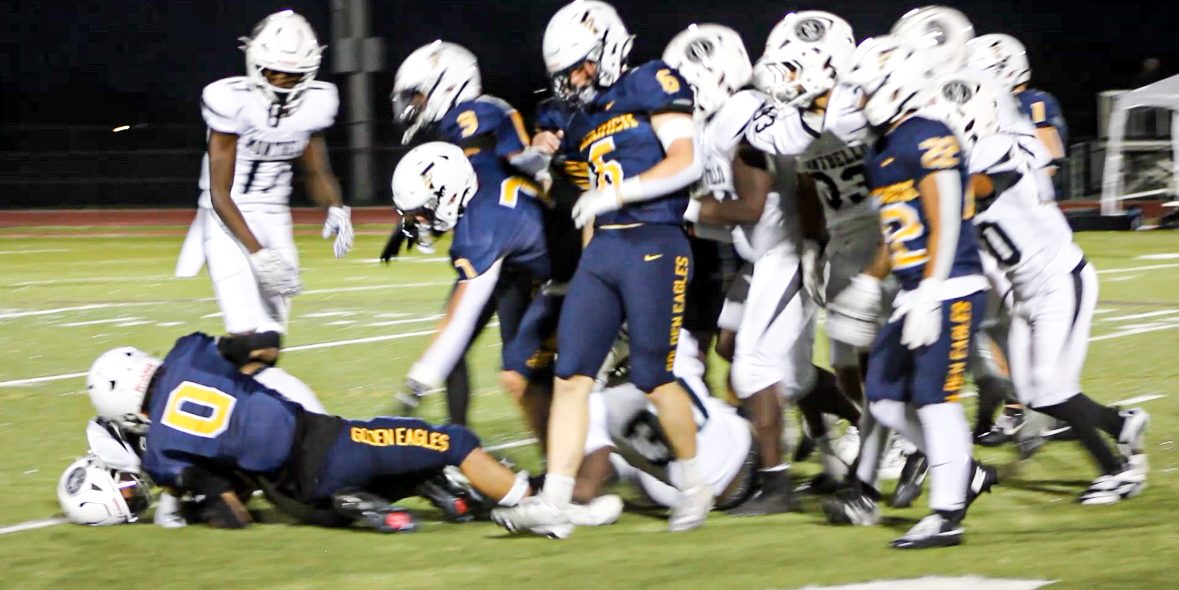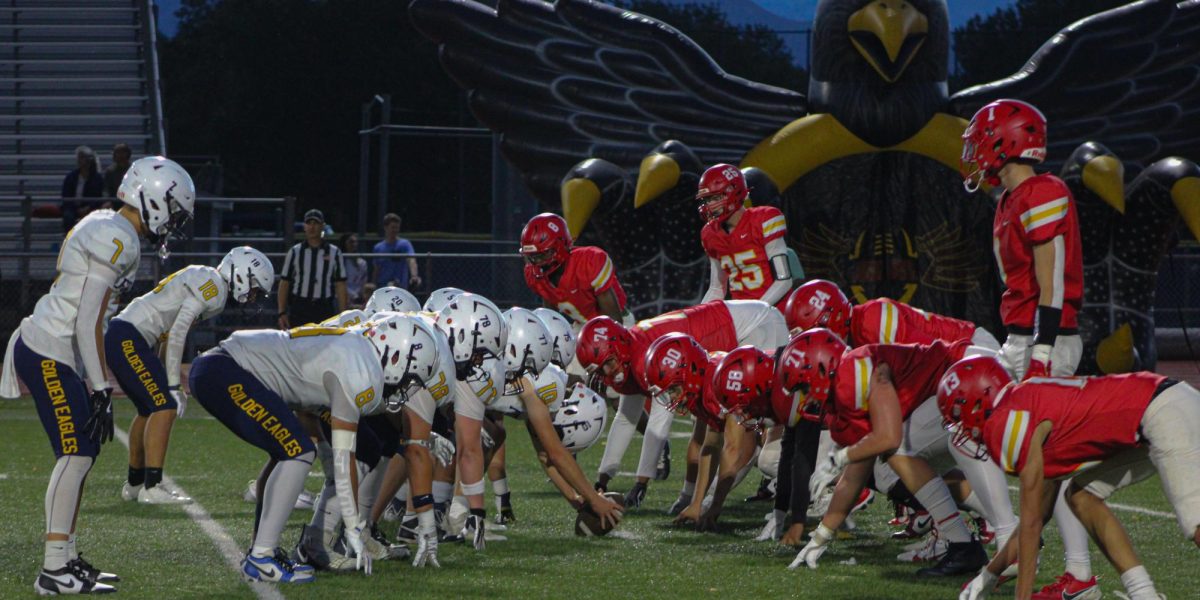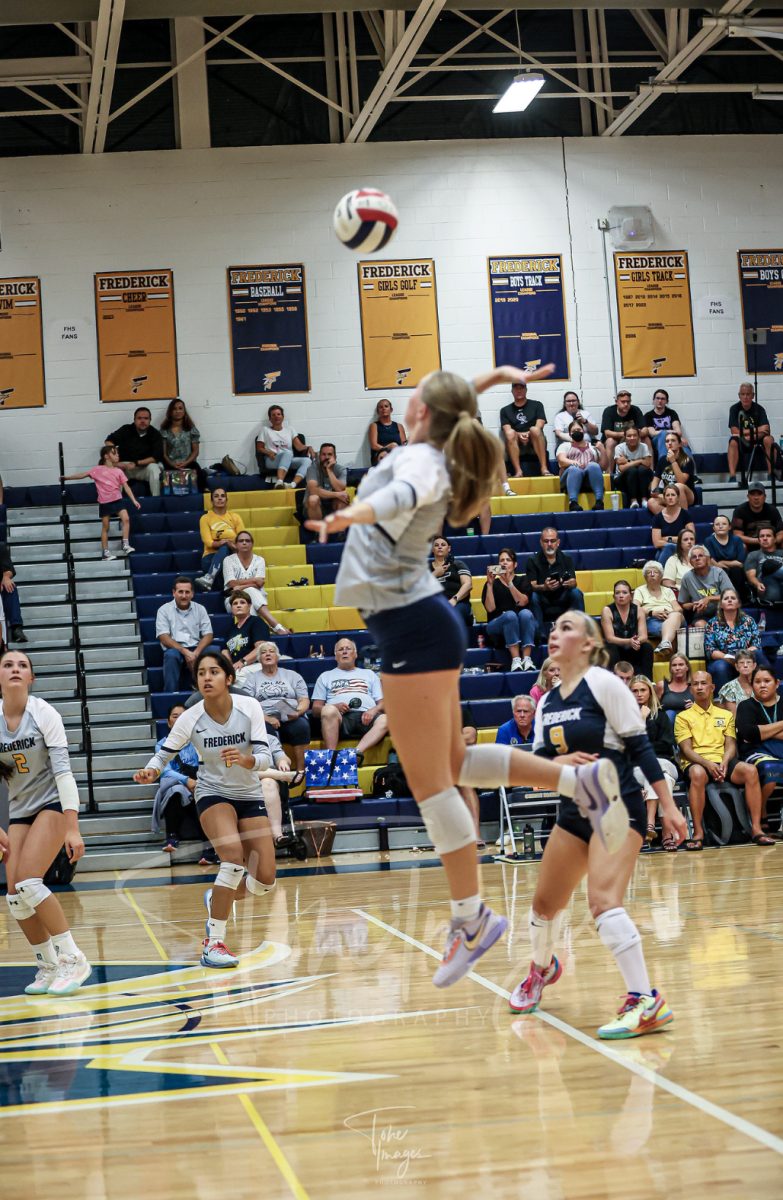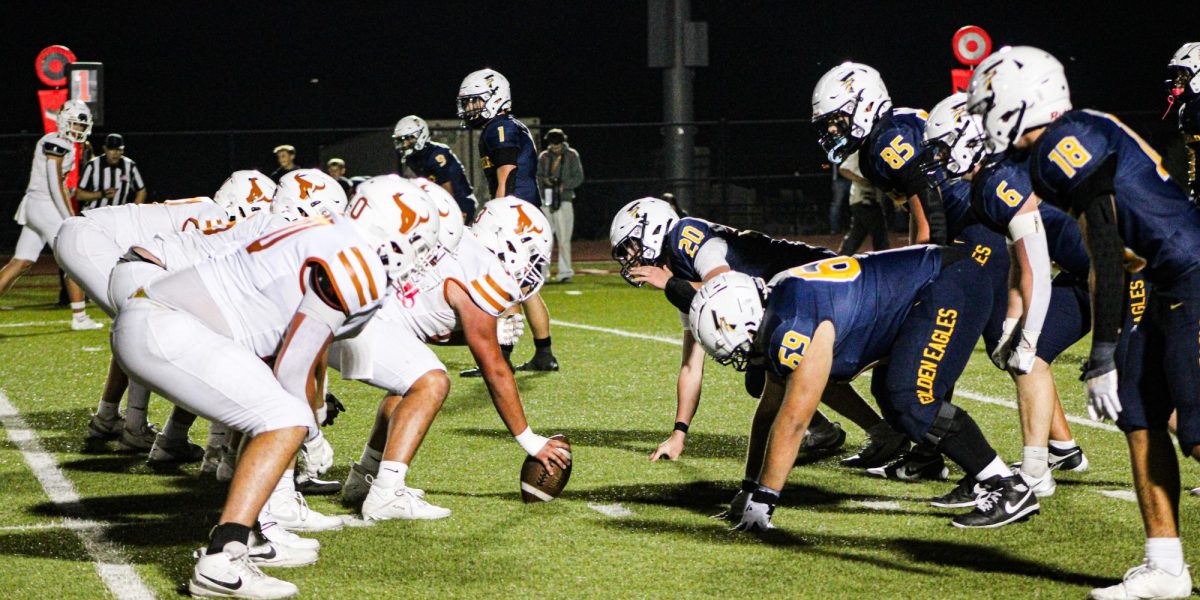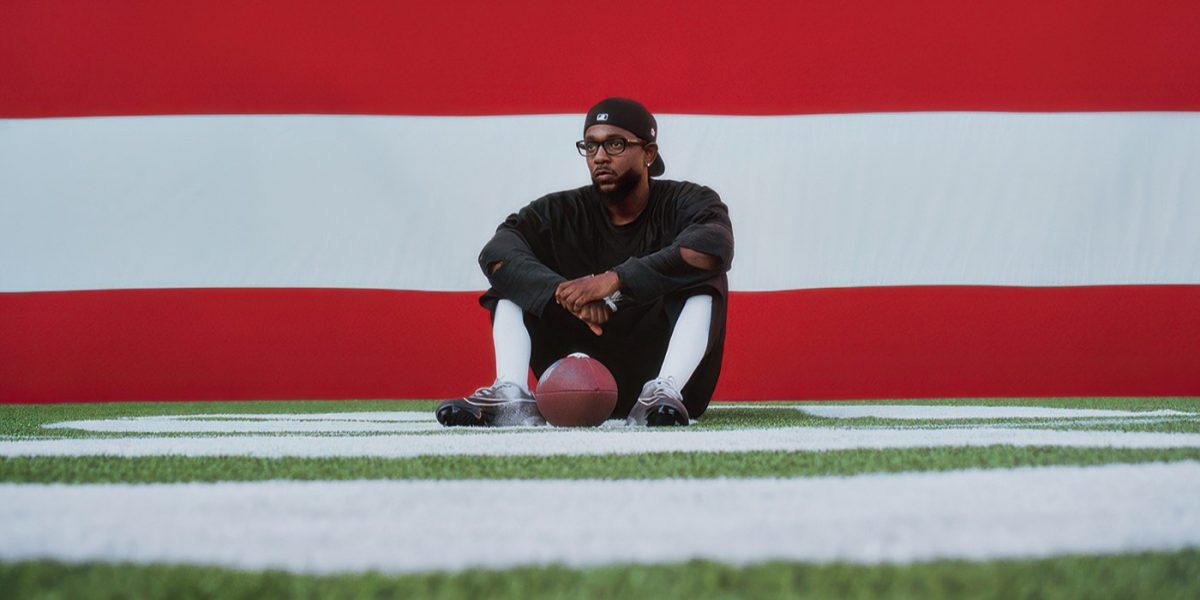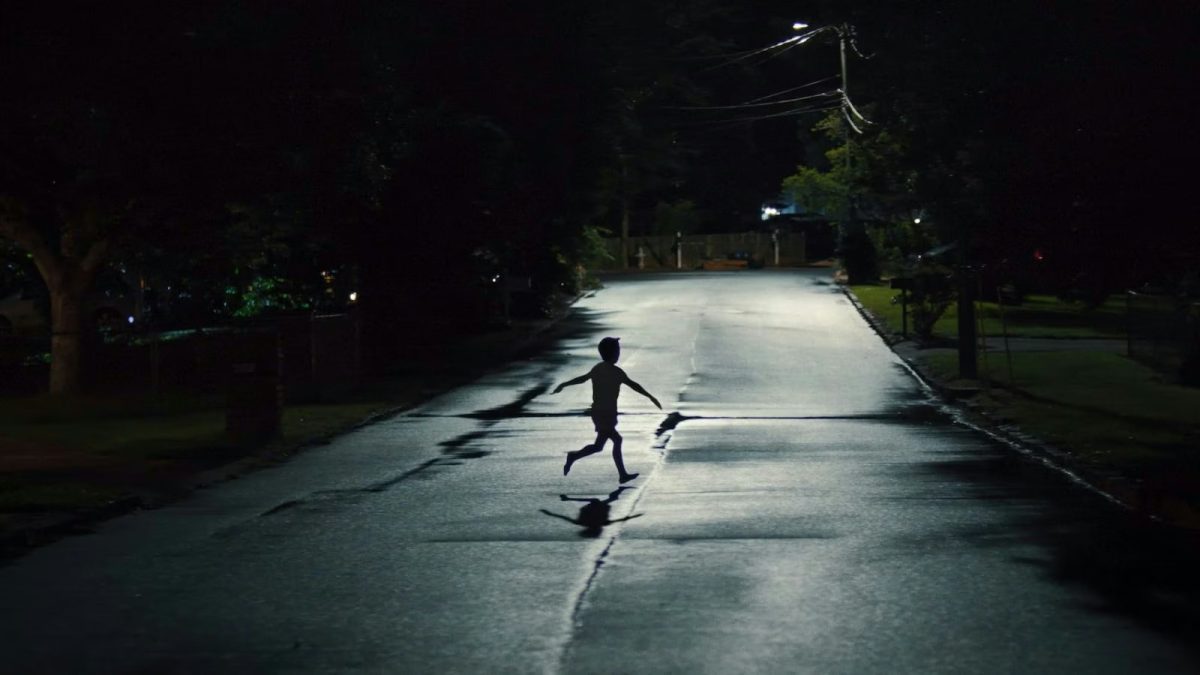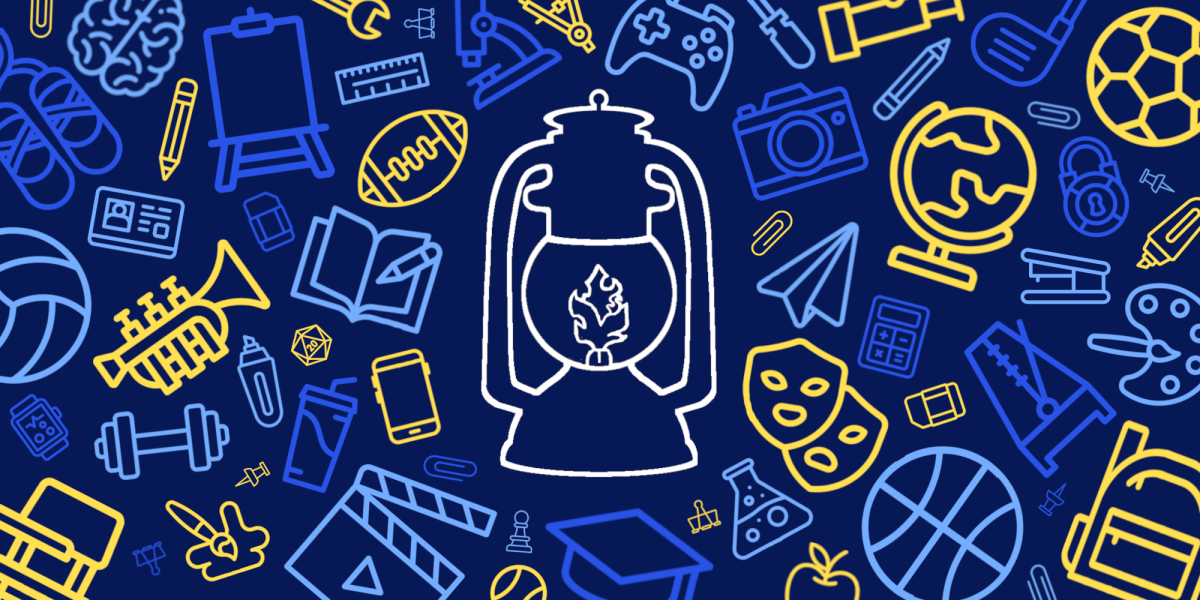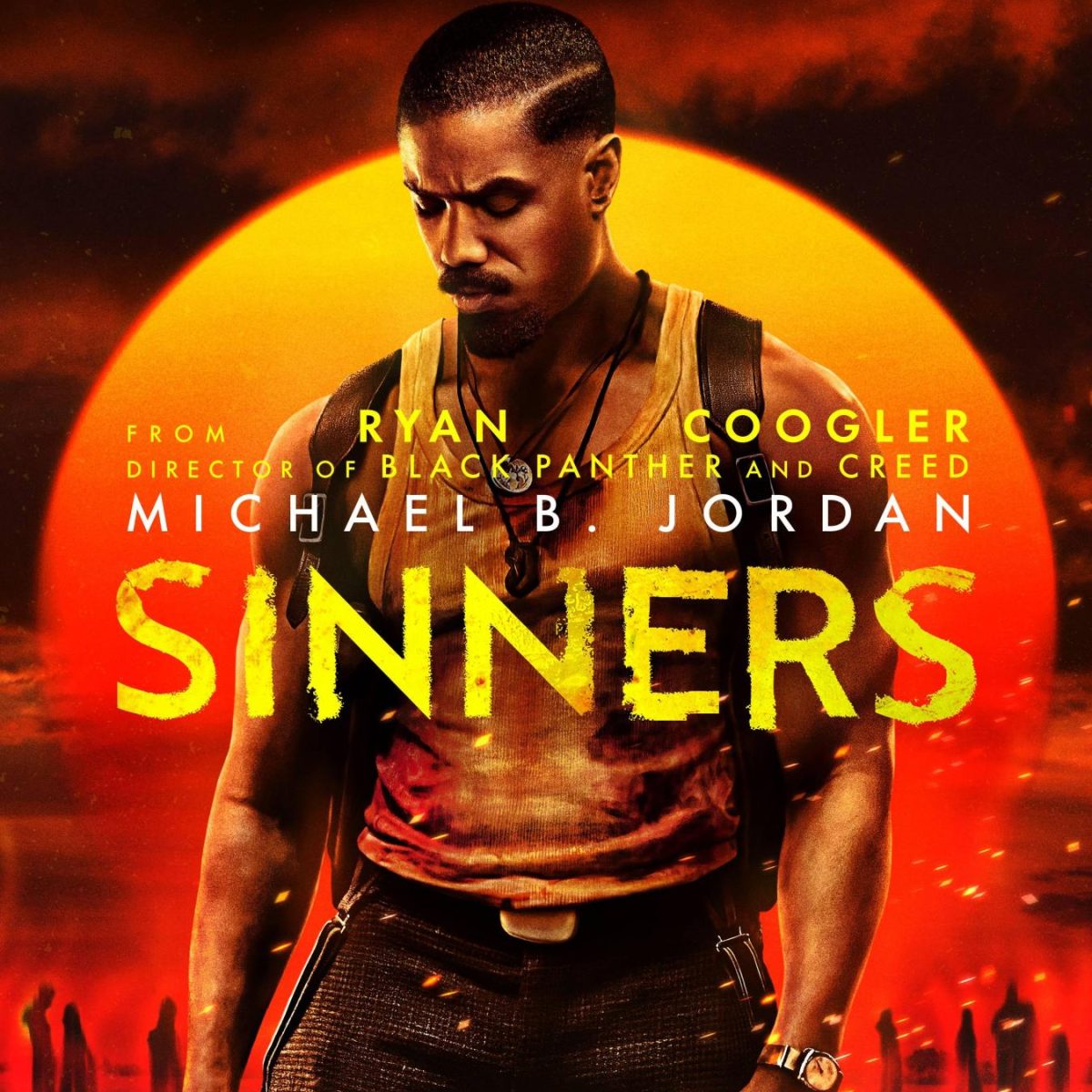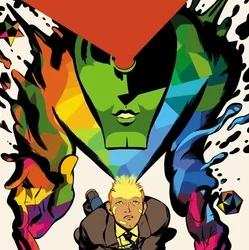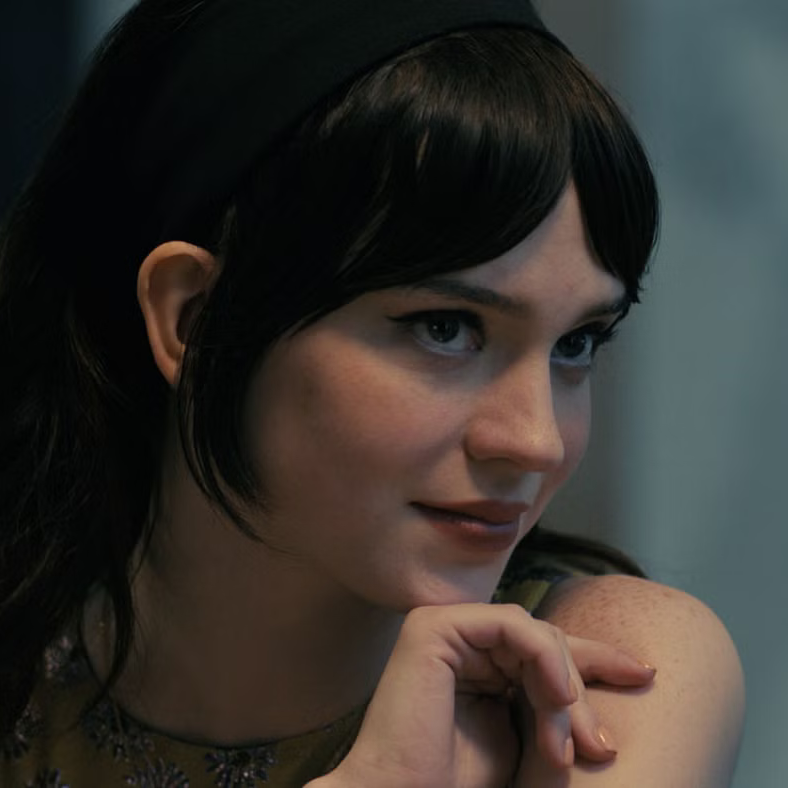On February 9, Super Bowl LIX ended the first half with NFC champions the Philadelphia Eagles dominating the AFC and two-time defending champion Kansas City Chiefs 24-0. While the Chiefs wouldn’t remain scoreless in the second half, they ultimately lost the game 40-22. But the highlight of the evening wasn’t the win by the Eagles; it wasn’t the celebrities in attendance (or watching those celebrities get booed); and it wasn’t Ye filming an $8 million dollar ad spot at the dentist for his Nazi-inspired clothing line. It was Kendrick Lamar.
Pulitzer Prize-winning rapper Kendrick Lamar, who won five Grammys the week before, took to the field Sunday to perform the most significant halftime show in the past decade and possibly of all time. During America’s most watched event of the year, Kendrick performed a tightly staged medley of 11 hits that illustrate the political and racial turmoil he sees in America. Kendrick’s performance captured the present cultural moment perfectly while also bringing the house down.
The production for the show revolved heavily around Kendrick’s newest studio album GNX with some older songs also mixed in. More than a glorified concert, Kendrick wanted his second halftime appearance to tell a story. He told PBS, “I think I’ve always been very open about storytelling through all my catalog and my history of music. And I’ve always had a passion about bringing that on whatever stage I’m on.”
He succeed. Kendrick’s performance had a record number of viewer going to the internet trying to figure out what it all meant. In the 12 hours after the game, the top 10 Google searches didn’t concern players or moments on the field; instead, they were “Serena Williams,” “40 acres and mule,” and other moments from Kendrick’s show. The internet has been flooded with social media posts and articles decrypting everything involving Kendrick’s performance and what he was trying to say to the record breaking number of viewers at home.
All About the Game
So what story did Kendrick chose tell? His performance was themed after the idea of games. After all, his performance was halfway through “the big game” as the Super Bowl is often called. At the start of the set, the staging on the field lit up with a 3 x 3 grid and flickering X’s and O’s: tic-tac-toe.
This game serves as an excellent metaphor for football, as playboos depict offensive and defensive players as X’s and O’s. When the stage fully lights up, each corner holds a different shape: an X, and O, a triangle, and a square. These represent the buttons of a PlayStation and symbolize Kendrick going from an old game to a new game. From the beginning, Kendrick tells the audience that he plans on changing the game.
The set started not with Kendrick but with actor Samuel L. Jackson playing Uncle Sam, a play on both the derrogatory term for self-depricating Black men and the actor’s first name. Like the “uncle” stereotype, Jackson’s Uncle Sam upholds traditional white values over his own culture. His introduction to the show is simple: “Salutations, it’s your Uncle Sam, and this is the great American game.”
Kendrick’s albums set him up as an anti-establishment figure who tells his listeners truths that the mainstream doesn’t want them to hear. For the halftime show, Uncle Sam fills the role of mainstream American culture there to make Kendrick play by society’s rules, a.k.a. the rules of the game. While dressed in stars and not stripes, Uncle Sam is there to play referee to Kendrick.
Sam does this by criticizing Kendrick between some of his songs, at one point telling him that he’s “too loud, too reckless, too ghetto.” He also asks him, “Mr. Lamar, do you really know how to play the game?” Sam (and by extension, mainstream America) wants Kendrick to sand off his rough edges and fit the family-friendly mold of past halftime performers. After all, they got Snoop Dogg to stop singing about killing cops and be TV friendly. They got Eminem and Dre and Diddy and 50 Cent and Missy Elliot to all play nice too. Kendrick was there; he saw it.
He’s Not Like Them
However, Kendrick made it clear from his first words that he’s not sanding his edges. After stepping out of a Buick Grand National (which inspired the name of his album GNX) to the instramental track “Wacced Out Murals” [sic], Kendrick surprised fans with a section of his unreleased track “Bodies.” Among his other firsts for this halftime show, Kendrick is the first artist to perform an unreleased song as part of their set.
Kenderick next says, “The revolution WILL be televised.” This is a play on “The Revolution Will Not Be Televised,” a 1971 poem by activist Gil Scott-Heron arguing that the fight for racial equality isn’t something that one can just watch on TV—it takes work. Kendrick’s revolution, however, will be televised because, unlike previous halftime performers, he refuses to play “the game” and strip his songs of their political context.
Kendrick then followed this up immediately by saying, “You got the right time but the wrong guy,” which has a double meaning. On the surface, he’s saying that it’s a perfect time for a fun halftime show, but he’s the wrong guy to provide the kind of show Uncle Sam wants. However, Kendrick’s fans believe this was also a message against President Donald Trump; essentially, while it’s the right time for a revolution to change America, Trump is the wrong guy to have in charge. Kenderick has never been shy about his disgust toward Trump and has called him a “chump” and a “punk” in his lyrics.
In fact, one of those who think Kendrick’s line took a swipe at Trump is Trump himself, who reportedly left “fuming mad” before the game was over. Other MAGA mouthpieces like Matt Gaetz, Lauren Boebert, and Ben Shapiro were quick to condemn Kendrick on social media.
A Stellar Set
While the political theatre of the first minute captured the attention of the internet, memorable songs make halftime shows great or gross, and Kendrick overdelivered. After “Bodies,” Kenderick went into “Squabble Up,” the lead single of GNX. For this song, dozens of red and white-clad background dancers flooded out of the GNX and flanked Kendrick on all sides. As squabble up is literally a call to fight, Kendrick and his dancers are at their most explosive and dynamic here.
Uncle Sam Jackson cuts the song short, calls Kendrick “too ghetto,” and tells him to “tighten up the act.” This is a direct reference to real life: several Republican Louisana lawmakers wrote a letter demanding Kendrick’s halftime show not be “offensive” in any way.
Kendrick then launches into his 2017 hit “Humble” from Damn, his album that won him a Pulitzer. During the song, his backup dancers are joined by some dancers dressed in blue to form an American flag—but one split in half with their backs to one another and Kendrick standing in the middle. This staging symbolizes the two political sides that currently divide America. The staging also has a meta meaning: the football game is split into two halves, and Kendrick is in the middle.
Kendrick then sang 30 seconds of “DNA,” his first number one hit and another song off Damn. This song mainly served to change the staging, as Kendrick swiftly transitioned to “Euphoria,” a diss track against Drake that Kendrick had only performed live once before. Both “Euphoria” and his deeply personal “Man in the Garden” had a chorus of men that were harmonizing behind Kendrick, which created a more soulful vibe to the performance. “Euphoria” also perfectly fits the story Kendrick wants to tell, as he sings about the rules of the game and a coin flip.
Struggling with Sam
Then Uncle Sam breaks in again to criticize: “Oh, you brought your homeboys with you… the old culture cheat code. Scorekeeper, deduct one life.” With this, Kendrick falls from the mainstage into the X-shaped platform (a moment many broadcasts missed). This was a clear jab at how the Uncle Sams of America see black lives as disposable, as X’s have a cultural connection to death. Luckily, Kendrick has multiple lives because, as Uncle Sam said at the start, he’s playing a game.
To appease Sam, Kendrick goes into “Peekaboo” along with his white-clad background dancers. Since halftime shows are known for their giant stage pieces, Kendrick once again buck the trend by staging this number in a small, self-contained area. “Peekaboo” shows off Kendrick’s playfulness and awareness of medium as well. For this number, the camera comes in close instead of keeping its distance, and Kendrick and his dancers pop in and out of the spinning camera frame and have to fight for its attention.
Sam interjects that “Peekaboo” is too slow—once again, it seems like Kendrick can’t do anything right in Sam’s eyes. This critiques the contradictory and often unfair expectations that mainstream culture has for black performers, an issue Kendrick has tackled before in his music. These constantly shifting expectations even have a name worthy of the venue: moving the goalpost.
Kendrick himself climbs out of the X and moves to the triangle platform where he performs “Luther” with frequent collaborator SZA before dashing to the circle platform to perform “All the Stars” from the Black Panther soundtrack. Not only do these songs show off the versatility in Kendrick’s discography, but they also show off SZA’s great vocals (the duo are touring together later this year). Even Sam enjoys this part of the show—he tells Kendrick, “That’s what America wants! Nice and calm. You’re almost there! Don’t mess this…”
The Beautiful Mess
Finally, Kendrick sing the song. Kendrick’s longest charting song on the Billboard Hot 100. The hip-hop song with the longest run at the top of the chart. The song that earned Kendrick Grammys for Record of the Year, Song of the Year, Best Rap Performance, Best Rap Song, and Best Music Video a week earlier. The song that media pundits questioned the most, wondering if Kendrick would be allowed to perform it: “Not Like Us.”
“Not Like Us” wasn’t just any song but was the final blow in a months-long feud between Canadian rapper Aubrey “Drake” Graham and Kendrick Lamar. In “Not Like Us,” Kendrick accuses Drake of sexual impropriety with underage girls as well as turning his back on black culture. Many doubted that the NFL would let Kendrick perform the song as it’s the center of a current lawsuit brough by Drake against Universal Music.
Kenderick leaned into this controversy. At the end of “Peekaboo,” Kendrick added a couple new lyrics about how he wants to “perform their favorite song but you know they love to sue.” Then the signature beat of “Not Like Us” played and he confirmed “Yeah, that song” only to be stopped by Uncle Sam yelling, “You’ve lost your damn mind!” And after Kendrick actually launches into “Not Like Us,” Sam isn’t seen again. While clearly a moment of rebellion, Kendrick did pull a couple punches: to not violate FCC rules, Kendrick cut a lyric where he called Drake a ped—— and for all his songs refrained from using the racial slur n—-.
Conversely, Kendrick added some important lyrics at the top of “Not Like Us.” Kendrick says, “40 acres and a mule—this is bigger than the music.” This references a proclamation made by a Union general in the days after the Civil War that the US government would provide newly-freed slaves with 40 acres of farmland and a mule to plow it. However, this promise was never kept and has since become shorthand for any failed promise made by American politician and cultural leaders to help the black community.
Kendrick follows this with another reference to games: “They try to rig the game, but you can’t fake influence.” Put with the previous 40 acres comment, Kendrick makes clear that the game he’s playing–performing for the NFL—has been rigged to supress the political expression of halftime artists. However, Kendrick’s influence that cannot be rigged and is genuine will allow him to subvert their limitations.
Kendrick Claims the Win
Kendrick treated “Not Like Us” as a victory celebration and went after Drake harder than ever before. He looked right into the camera when he sang, “Hey Drake, I hear you like ’em young,” and he got nearly the entire stadium to sing a lyric about Drake preferring the “chord” A-minor. Kenrick also had two of Drake’s ex-girlfriends as two of his backup dancer,: SZA and tennis champion Serena Williams. Kendrick made the song the centerpiece of his performance: he sang it for longer than any other song in his medley, and the choreography used the entire stage and all 400+ backup dancers.
However, putting the final nail in the coffin of Drake’s career wasn’t the end of Kendrick’s story. To wrap up his performance, he performed “TV Off” with his producer on GNX the former-DJ Mustard. Along with Mustard came the traditional marching bands that performed at the Super Bowl halftime before big stars got involved.
The song looped back to Kendrick’s first words about the revolution being televised because he just finished his revolution. He upset the traditional halftime apple cart with a story-driven performance full of criticism against football, the music industry, and the NFL itself. He sang the song the powers-that-be didn’t want him to sing. Now that he’s done it, he wants the viewers to turn the TV off—to not watch the rest of the football game–and start their own revolution. He emphasizes this when, as soon as he stops singing, the stadium seats light up with the words “game over.”
While his set didn’t have as many featured guests as past performances, Kendrick had what mattered: authenticity. Kendrick’s rapping showed the energy and passion that he brings to every project. His backup dancers also looked like they put their heart and soul into every song. More than anything, Kend did the show his way. He won the game, and created a fantastic performance that no one who saw it can ever forget. Love it or hate it, what Kendrick did mattered.
Kendrick went to the biggest game of the year and changed the game.




